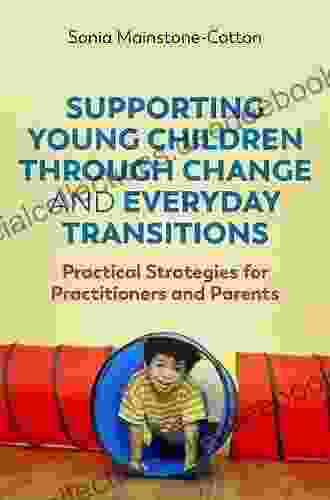Practical Strategies For Practitioners And Parents Of Children With Autism

Autism spectrum disorder (ASD) is a complex developmental disorder that affects a person's ability to communicate, socialize, and interact with the world around them. There is no one-size-fits-all approach to treating ASD, but there are a number of practical strategies that practitioners and parents can use to help children with ASD reach their full potential.
One of the most important challenges facing children with ASD is communication. They may have difficulty understanding spoken language, expressing themselves verbally, or using non-verbal cues. There are a number of strategies that practitioners and parents can use to help children with ASD improve their communication skills.
- Use visual aids. Visual aids, such as pictures, charts, and graphs, can help children with ASD understand concepts and communicate their thoughts and feelings.
- Use sign language. Sign language is a great way for children with ASD to communicate with others. It is a visual language that uses hand gestures and facial expressions to convey meaning.
- Use technology. There are a number of technology-based tools that can help children with ASD communicate. These tools include speech-generating devices, communication apps, and social media.
- Be patient and supportive. It takes time for children with ASD to develop their communication skills. Be patient and supportive, and don't get discouraged if they don't progress as quickly as you would like.
Another challenge facing children with ASD is socialization. They may have difficulty interacting with peers, making friends, and understanding social cues. There are a number of strategies that practitioners and parents can use to help children with ASD improve their socialization skills.
5 out of 5
| Language | : | English |
| File size | : | 1846 KB |
| Text-to-Speech | : | Enabled |
| Screen Reader | : | Supported |
| Enhanced typesetting | : | Enabled |
| Word Wise | : | Enabled |
| Print length | : | 144 pages |
- Encourage peer play. Peer play is an important way for children with ASD to learn social skills. Encourage them to play with other children in supervised settings.
- Join support groups. Support groups provide children with ASD with opportunities to interact with other children who have similar challenges.
- Attend social skills training classes. Social skills training classes can teach children with ASD how to interact with others in appropriate ways.
- Be patient and supportive. It takes time for children with ASD to develop their socialization skills. Be patient and supportive, and don't get discouraged if they don't progress as quickly as you would like.
Children with ASD may also exhibit challenging behaviors, such as tantrums, aggression, and self-injury. These behaviors can be frustrating for both the child and their caregivers. There are a number of strategies that practitioners and parents can use to help children with ASD manage their challenging behaviors.
- Identify triggers. The first step to managing challenging behaviors is to identify what triggers them. Once you know what triggers a behavior, you can work to avoid or eliminate those triggers.
- Establish routines. Routines can help children with ASD feel more secure and predictable. Establish routines for daily activities, such as waking up, eating, and going to bed.
- Use positive reinforcement. Positive reinforcement is a great way to encourage children with ASD to engage in desired behaviors. Reward them with praise, treats, or other positive consequences when they behave appropriately.
- Be consistent. It is important to be consistent with your expectations and consequences. This will help children with ASD understand what is expected of them.
- Seek professional help. If you are struggling to manage your child's challenging behaviors, don't hesitate to seek professional help. A therapist can help you develop a behavior plan that is tailored to your child's individual needs.
Children with ASD have a variety of educational needs. Some children with ASD may be able to attend general education classrooms with support, while others may need to attend specialized schools or programs. There are a number of things that practitioners and parents can do to ensure that children with ASD receive the education they need.
- Early intervention. Early intervention is key for children with ASD. The earlier a child receives intervention, the better their chances of success.
- Individualized education program (IEP). An IEP is a legal document that outlines a child's educational needs and how those needs will be met. An IEP is developed by a team of professionals, including the child's parents, teachers, and therapists.
- Special education services. Children with ASD may need special education services, such as speech therapy, occupational therapy, or physical therapy. These services can help children with ASD develop the skills they need to be successful in school and in life.
- Advocacy. It is important for parents to be advocates for their children with ASD. This means being involved in their child's education, speaking up for their rights, and ensuring that they receive the services they need.
Raising a child with ASD can be challenging, but it is also rewarding. By using the strategies outlined in this article, you can help your child reach their full potential and live a happy and fulfilling life.
5 out of 5
| Language | : | English |
| File size | : | 1846 KB |
| Text-to-Speech | : | Enabled |
| Screen Reader | : | Supported |
| Enhanced typesetting | : | Enabled |
| Word Wise | : | Enabled |
| Print length | : | 144 pages |
Do you want to contribute by writing guest posts on this blog?
Please contact us and send us a resume of previous articles that you have written.
 Novel
Novel Page
Page Story
Story Genre
Genre Library
Library Paperback
Paperback E-book
E-book Magazine
Magazine Newspaper
Newspaper Bookmark
Bookmark Glossary
Glossary Bibliography
Bibliography Foreword
Foreword Synopsis
Synopsis Footnote
Footnote Manuscript
Manuscript Scroll
Scroll Narrative
Narrative Memoir
Memoir Reference
Reference Dictionary
Dictionary Thesaurus
Thesaurus Narrator
Narrator Character
Character Librarian
Librarian Catalog
Catalog Card Catalog
Card Catalog Archives
Archives Periodicals
Periodicals Scholarly
Scholarly Reserve
Reserve Academic
Academic Journals
Journals Reading Room
Reading Room Study Group
Study Group Thesis
Thesis Awards
Awards Reading List
Reading List Theory
Theory Textbooks
Textbooks Jake Bittle
Jake Bittle Paul Brown
Paul Brown Kathryn Blanche
Kathryn Blanche Michel Cosson
Michel Cosson Veda Boyd Jones
Veda Boyd Jones Stephen A Ruffa
Stephen A Ruffa Sandra Rollings Magnusson
Sandra Rollings Magnusson Roberto Galli
Roberto Galli Harvey F Kline
Harvey F Kline Michael Vannoy Adams
Michael Vannoy Adams John G Fainella
John G Fainella Dave Brown
Dave Brown Andy Seed
Andy Seed Quinn Loftis
Quinn Loftis Anna Bell
Anna Bell Heather Vogel Frederick
Heather Vogel Frederick Abigail Mann
Abigail Mann Janie Chang
Janie Chang Donna Gielow Mcfarland
Donna Gielow Mcfarland Caryn Lee
Caryn Lee
Light bulbAdvertise smarter! Our strategic ad space ensures maximum exposure. Reserve your spot today!

 Ryūnosuke AkutagawaA Decade Later: A Comparative Analysis of England and France in the Aftermath...
Ryūnosuke AkutagawaA Decade Later: A Comparative Analysis of England and France in the Aftermath... Neal WardFollow ·16.8k
Neal WardFollow ·16.8k Doug PriceFollow ·14k
Doug PriceFollow ·14k Joshua ReedFollow ·12.8k
Joshua ReedFollow ·12.8k Clinton ReedFollow ·9.1k
Clinton ReedFollow ·9.1k Franklin BellFollow ·4.4k
Franklin BellFollow ·4.4k Jonathan FranzenFollow ·9.7k
Jonathan FranzenFollow ·9.7k Ibrahim BlairFollow ·2.4k
Ibrahim BlairFollow ·2.4k Dwight BlairFollow ·12.7k
Dwight BlairFollow ·12.7k

 Andy Hayes
Andy HayesEmbracing Now: Embark on a Mindfulness Journey for a...
In a world...

 Heath Powell
Heath Powell100 Hymns for Violin and Guitar: A Comprehensive Guide to...
The violin and...

 Floyd Richardson
Floyd RichardsonBark In The Park: Poems For Dog Lovers
Dogs are our best...

 Douglas Adams
Douglas AdamsThe Barter Crusade: A Journey into the Realm of Exchange...
In a world driven by monetary transactions,...

 Nathaniel Hawthorne
Nathaniel HawthorneInsight Guides Explore Nice & the French Riviera...
Prepare to embark on an unforgettable journey...

 Carlos Fuentes
Carlos FuentesThe Ultimate Practical Guide to Percussion: Exploring the...
Embark on a journey into the enchanting...
5 out of 5
| Language | : | English |
| File size | : | 1846 KB |
| Text-to-Speech | : | Enabled |
| Screen Reader | : | Supported |
| Enhanced typesetting | : | Enabled |
| Word Wise | : | Enabled |
| Print length | : | 144 pages |









